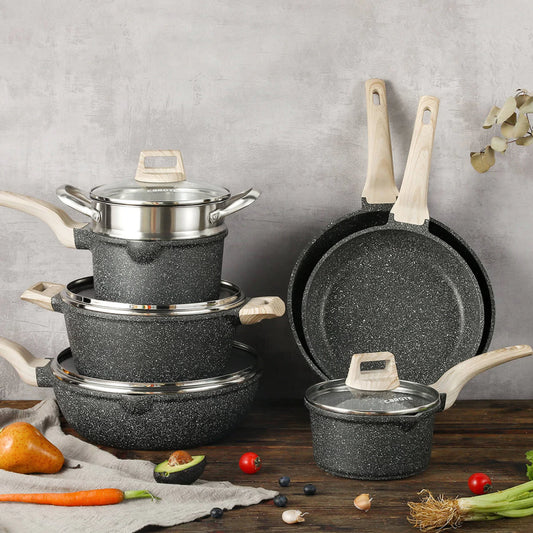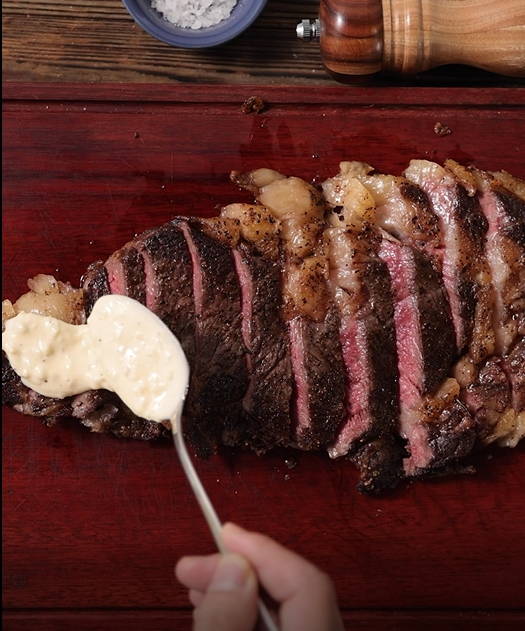A frying pan is definitely a you-must-have pan for daily cooking; its versatile uses bring many benefits that we all love. Wonder what a frying pan can do? Searing, browning, frying, etc. Just a small pan can cover your basic needs. And what we are going to show you today is how to pan-sear a perfect steak.
Different parts of a cow:
Firstly let’s talk about different parts of a cow. There’s a science about cow cuts, each region has different cutting method. And the USDA divides a cow into 8 parts. They are called the primal cuts or the main cuts:- Chuck
- Brisket
- Rib
- Plate
- Flank
- Loin(Sirloin and loin)
- Round
- Shank.
Chuck, Brisket, and Round are considered the toughest parts of a cow, as they are the muscles usually used for heavy work, so the meat there is tougher than other parts. While rib and loin are the tendest parts, which are favorite parts of a steak lover, but also it’s quite pricey. Better to pick a steak from a local butcher or a high-quality grocery store with affordable budget. And remember, the more marbling is, the more tender it will be.


What pan should you use?
Smart as you must think, a frying pan as the title shows. But which frying pan is better? An experienced chef will choose a large-size cast iron skillet, as it conducts heat way better than other pans for searing a steak. But guess what, the granite frying pan is also suitable for searing steak. It has excellent heat distribution to cook the steak to perfection thanks to the die-cast aluminum core and expanded & thickened magnetic bottom.
Preparation:
-
Once we choose a perfect steak, the first thing to do is defrost it. A conduction plate(also called a diffuser plate) would be a good choice, as it defrosts faster than other regular methods. It can accelerate the thawing process for speedy defrosting, keeping steak fresher and saving time.
-
Using a kitchen paper towel to absorb extra moisture or blood from the steak, cover it with a paper towel and tenderly press on it. That’s right; if you want a nice-chewing steak, first you need to massage it. Moisture is the top enemy of a delicious steak, as water may reduce the searing process and make it less flavorful. Press until the paper towel is dry, then it’s good to go.
-
Season the steak on each side with salt and pepper. Giving another massage to let it absorb those ingredients can make your steak tastes better.
-
Set a frying pan and pour out some cooking oil.
Cooking:
-
Place the steak on a nonstick frying pan, using medium heat to sear the steak for about 3–4 minutes. Add a little butter, herb, and some garlic during the process. This is for better flavor.
-
Keeping turning the steak, make it evenly seared. If you are a beginner, recommend turning the steak every minute to easily monitor the searing process if you are worried about overcooking it.
-
Knowing when it’s done. Every person has their own desired doneness, but how to tell if the steak is done is a tricky question. The easiest way is using a digital instant-read thermometer to temp the steak. Check the temperature as below:
Rare: 125 degrees F + 3-minute rest off the heat
Medium-Rare: 130 to 135 degrees F
Medium: 135 to 140 degrees F
Medium-Well: 140 to 150 degrees F
Well-Done: 155 degrees F +
-
Take out the steak and place it on a plate for 4 minutes. You are probably hungry by now; smelling the delicious and juicy steak is definitely mouth-watering. But it’s better to let it rest for a while to allow the juice inside redistribute; otherwise it’ll flow away, ruin your hard work.
Tips: Pour some melted butter on steak during searing process, enhance the flavor of steak and giving it a creamy texture.
Once the steak is ready, pour yourself a glass of wine and slice the steak against the grain. And enjoy every bite of the juice steak.
Sources:




